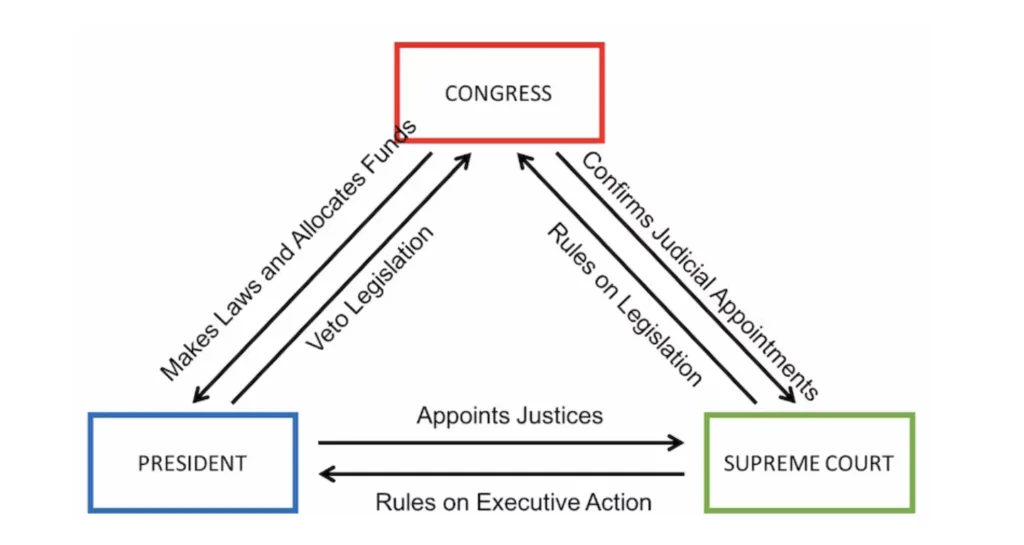Intelligent Occupancy Sensor Market Overview, Growth Analysis, Trends and Forecast By 2029
Global Intelligent Occupancy Sensor Market was valued at USD 2.53 billion in 2021 and is expected to reach USD 24.91 billion by 2029, registering a CAGR of 33.10% during the forecast period of 2022-2029.

The Intelligent Occupancy Sensor Market sector is undergoing rapid transformation, with significant growth and innovations expected by 2029. In-depth market research offers a thorough analysis of market size, share, and emerging trends, providing essential insights into its expansion potential. The report explores market segmentation and definitions, emphasizing key components and growth drivers. Through the use of SWOT and PESTEL analyses, it evaluates the sector’s strengths, weaknesses, opportunities, and threats, while considering political, economic, social, technological, environmental, and legal influences. Expert evaluations of competitor strategies and recent developments shed light on geographical trends and forecast the market’s future direction, creating a solid framework for strategic planning and investment decisions.
Brief Overview of the Intelligent Occupancy Sensor Market:
The global Intelligent Occupancy Sensor Market is expected to experience substantial growth between 2024 and 2031. Starting from a steady growth rate in 2023, the market is anticipated to accelerate due to increasing strategic initiatives by key market players throughout the forecast period.
Get a Sample PDF of Report - https://www.databridgemarketresearch.com/request-a-sample/?dbmr=global-intelligent-occupancy-sensor-market
Which are the top companies operating in the Intelligent Occupancy Sensor Market?
The report profiles noticeable organizations working in the water purifier showcase and the triumphant methodologies received by them. It likewise reveals insights about the share held by each organization and their contribution to the market's extension. This Global Intelligent Occupancy Sensor Market report provides the information of the Top Companies in Intelligent Occupancy Sensor Market in the market their business strategy, financial situation etc.
Legrand. (France), Schneider Electric (France), Eaton (Ireland), Johnson Controls. (Ireland), ACUITY BRANDS LIGHTING, INC. (US), Leviton Manufacturing Co., Inc. (US), Lutron Electronics Co., Inc. (US), Honeywell International Inc. (US), Hubbell. (US), Texas Instruments Incorporated. (US), OSRAM GmbH. (Germany), Siemens (Germany), Enerlites, Inc. (US), Pyrotech Electronics Pvt. Ltd. (India), Hager Ltd (Germany), Crestron Electronics, Inc. (US), among others
Report Scope and Market Segmentation
Which are the driving factors of the Intelligent Occupancy Sensor Market?
The driving factors of the Intelligent Occupancy Sensor Market are multifaceted and crucial for its growth and development. Technological advancements play a significant role by enhancing product efficiency, reducing costs, and introducing innovative features that cater to evolving consumer demands. Rising consumer interest and demand for keyword-related products and services further fuel market expansion. Favorable economic conditions, including increased disposable incomes, enable higher consumer spending, which benefits the market. Supportive regulatory environments, with policies that provide incentives and subsidies, also encourage growth, while globalization opens new opportunities by expanding market reach and international trade.
Intelligent Occupancy Sensor Market - Competitive and Segmentation Analysis:
**Segments**
- By Type: Passive Infrared (PIR) Sensors, Ultrasonic Sensors, Dual-Technology Sensors, Others
- By End-User: Residential, Commercial, Industrial
- By Application: Lighting Systems, HVAC Systems, Security & Surveillance Systems, Others
- By Region: North America, Europe, Asia-Pacific, Latin America, Middle East and Africa
The global intelligent occupancy sensor market is expected to witness significant growth from 2022 to 2029. The market is segmented based on type, end-user, application, and region. In terms of type, the market is categorized into passive infrared (PIR) sensors, ultrasonic sensors, dual-technology sensors, and others. The PIR sensors segment is expected to dominate the market due to their widespread use in various applications such as lighting control and energy management systems. When it comes to end-users, the market is divided into residential, commercial, and industrial sectors. The commercial sector is projected to hold a substantial market share as smart building initiatives drive the adoption of intelligent occupancy sensors for efficient energy management. In the application segment, the market is segmented into lighting systems, HVAC systems, security & surveillance systems, and others. The lighting systems segment is likely to lead the market growth owing to the increased emphasis on energy conservation and sustainability. Geographically, the market is analyzed across North America, Europe, Asia-Pacific, Latin America, and the Middle East and Africa.
**Market Players**
- Legrand, Schneider Electric, Eaton Corporation, Leviton Manufacturing Co., Inc., Texas Instruments, Siemens AG, Johnson Controls, Honeywell International Inc., General Electric, Philips Lighting, Lutron Electronics, Crestron Electronics, Inc., Acuity Brands Lighting, Inc., Leviton Manufacturing Co., Inc., Enlighted Inc., Steinel America, Inc., Corporate Expansion, etc.
Key market players in the global intelligent occupancy sensor market include Legrand, Schneider Electric, Eaton Corporation, Leviton Manufacturing Co., Inc., Texas Instruments, Siemens AG, Johnson Controls, Honeywell International Inc., General Electric, Philips Lighting, Lutron Electronics, Crestron Electronics, Inc., Acuity Brands Lighting, Inc., Leviton Manufacturing Co., Inc., Enlighted Inc., Steinel America, Inc., and Corporate Expansion. These companies are focusing on product innovation, strategic partnerships, collaborations, and acquisitions to gain a competitive edge in the market.
https://www.databridgemarketresearch.com/reports/global-intelligent-occupancy-sensor-marketThe global intelligent occupancy sensor market is poised for substantial growth driven by advancements in smart building technologies, increasing awareness regarding energy efficiency, and the need for enhanced security solutions across various industries. While the market is segmented into different types of sensors such as passive infrared (PIR), ultrasonic, and dual-technology sensors, each type offers unique capabilities catering to specific needs within residential, commercial, and industrial applications. The widespread adoption of PIR sensors can be attributed to their effectiveness in controlling lighting systems and optimizing energy consumption, especially in commercial buildings where energy management plays a crucial role in operational efficiency.
In terms of end-users, the commercial sector is anticipated to be a key contributor to market growth, fueled by the implementation of smart building initiatives aimed at improving occupant comfort, reducing operational costs, and meeting sustainability goals. Intelligent occupancy sensors integrated into lighting, HVAC, and security systems enable proactive management of building resources while enhancing overall user experience. Additionally, the residential segment is likely to experience growth as smart home technologies become more mainstream, driving the demand for intelligent sensors that offer convenience and energy savings for homeowners.
Within the application segment, the focus on lighting systems is expected to drive significant market expansion, driven by regulatory measures emphasizing energy conservation and carbon footprint reduction. Intelligent occupancy sensors play a vital role in optimizing lighting control based on occupancy detection, thereby reducing energy wastage and enhancing overall building efficiency. Furthermore, the integration of these sensors into HVAC and security systems underscores the importance of comprehensive building automation solutions that prioritize occupant comfort and safety.
From a regional perspective, North America and Europe are projected to lead the market due to early adoption of smart building technologies, stringent energy efficiency regulations, and a growing emphasis on sustainable practices. The Asia-Pacific region showcases tremendous potential for market growth, propelled by rapid urbanization, increasing investments in infrastructure development, and rising awareness regarding smart technology implementations across various sectors. Latin America and the Middle East and Africa regions also present opportunities for market players to expand their presence and capitalize on the evolving landscape of intelligent occupancy sensors.
In conclusion, the global intelligent occupancy sensor market is poised for significant growth driven by technological advancements, increasing demand for energy-efficient solutions, and expanding applications across diverse end-user segments. Key market players are actively engaged in innovation and strategic collaborations to stay competitive and address the evolving needs of the market, setting the stage for a dynamic and vibrant industry landscape in the coming years.**Segments**
Global Intelligent Occupancy Sensor Market, By Operation (Indoor Operation, Outdoor Operation), Coverage Area (Less Than 89°, 90 & 179°, 180 & 360°), Building Type (Residential Buildings, Commercial Buildings), Network Connectivity (Wired Network, Wireless Network), Application (Lighting Systems, HVAC Systems, Security and Surveillance Systems, Others) Industry Trends and Forecast to 2029:
- Operation: The market is segmented based on the operation, with options for indoor and outdoor operation to cater to different environmental requirements and applications.
- Coverage Area: Different coverage areas, such as less than 89°, 90 & 179°, and 180 & 360°, provide flexibility and specificity in detecting occupancy for various settings.
- Building Type: The segmentation based on building type includes residential buildings and commercial buildings, reflecting the diverse needs and usage scenarios across different structures.
- Network Connectivity: The market distinguishes between wired and wireless network connections, offering flexibility and scalability in integrating occupancy sensors into existing building infrastructures.
- Application: Various applications such as lighting systems, HVAC systems, security and surveillance systems, and others demonstrate the versatility and adaptability of intelligent occupancy sensors in enhancing operational efficiency and occupant comfort across different industries.
**Market Players**
- Legrand (France)
- Schneider Electric (France)
- Eaton (Ireland)
- Johnson Controls. (Ireland)
- ACUITY BRANDS LIGHTING, INC. (US)
- Leviton Manufacturing Co., Inc. (US)
- Lutron Electronics Co., Inc. (US)
- Honeywell International Inc. (US)
- Hubbell. (US)
- Texas Instruments Incorporated. (US)
- OSRAM GmbH. (Germany)
- Siemens (Germany)
- Enerlites, Inc. (US)
- Pyrotech Electronics Pvt. Ltd. (India)
- Hager Ltd (Germany)
- Crestron Electronics, Inc. (US)
- Among others
The global intelligent occupancy sensor market is forecasted to experience substantial growth during the projected period, driven by the increasing adoption of smart building technologies, rising awareness about energy efficiency, and the growing demand for enhanced security solutions in various industries. The segmentation of the market into different types of sensors, including passive infrared (PIR), ultrasonic, and dual-technology sensors, enables tailored solutions for residential, commercial, and industrial applications. The dominance of PIR sensors, particularly in lighting control and energy management systems within commercial buildings, underscores their efficiency and effectiveness in optimizing resource usage.
The commercial sector is expected to play a pivotal role in driving market growth, fueled by smart building initiatives focused on enhancing occupant comfort, reducing operational costs, and achieving sustainability objectives. Improvement in building resource management and user experience is facilitated by the integration of intelligent occupancy sensors into lighting, HVAC, and security systems. Additionally, the residential segment is poised for growth as smart home technologies gain popularity, increasing the demand for sensors that offer convenience and energy savings to homeowners.
The emphasis on lighting systems within the application segment is projected to propel market expansion significantly, supported by regulations promoting energy conservation and carbon footprint reduction. Intelligent occupancy sensors play a crucial role in optimizing lighting control through occupancy detection, leading to reduced energy wastage and enhanced building efficiency. Furthermore, the integration of these sensors into HVAC and security systems highlights the significance of comprehensive building automation solutions that prioritize occupant safety and comfort.
Regionally, North America and Europe are expected to lead the market due to early adoption of smart building technologies, stringent energy efficiency regulations, and a growing focus on sustainable practices. The Asia-Pacific region offers substantial growth opportunities driven by rapid urbanization, increased infrastructure investments, and rising awareness of smart technology adoption. Latin America and the Middle East and Africa regions also present avenues for market players to expand their footprint and leverage the evolving landscape of intelligent occupancy sensors.
In summary, the global intelligent occupancy sensor market is poised for significant growth propelled by technological advancements, the surge in demand for energy-efficient solutions, and the expanding application scope across diverse end-user segments. Market players are actively engaging in innovation and strategic partnerships to maintain competitiveness and address evolving market demands, setting the stage for a vibrant and dynamic industry landscape in the foreseeable future.
North America, particularly the United States, will continue to exert significant influence that cannot be overlooked. Any shifts in the United States could impact the development trajectory of the Intelligent Occupancy Sensor Market. The North American market is poised for substantial growth over the forecast period. The region benefits from widespread adoption of advanced technologies and the presence of major industry players, creating abundant growth opportunities.
Similarly, Europe plays a crucial role in the global Intelligent Occupancy Sensor Market, expected to exhibit impressive growth in CAGR from 2024 to 2029.
Explore Further Details about This Research Intelligent Occupancy Sensor Market Report https://www.databridgemarketresearch.com/reports/global-intelligent-occupancy-sensor-market
Key Benefits for Industry Participants and Stakeholders: –
- Industry drivers, trends, restraints, and opportunities are covered in the study.
- Neutral perspective on the Intelligent Occupancy Sensor Market scenario
- Recent industry growth and new developments
- Competitive landscape and strategies of key companies
- The Historical, current, and estimated Intelligent Occupancy Sensor Market size in terms of value and size
- In-depth, comprehensive analysis and forecasting of the Intelligent Occupancy Sensor Market
Geographically, the detailed analysis of consumption, revenue, market share and growth rate, historical data and forecast (2024-2031) of the following regions are covered in Chapters
The countries covered in the Intelligent Occupancy Sensor Market report are U.S., Canada and Mexico in North America, Brazil, Argentina and Rest of South America as part of South America, Germany, Italy, U.K., France, Spain, Netherlands, Belgium, Switzerland, Turkey, Russia, Rest of Europe in Europe, Japan, China, India, South Korea, Australia, Singapore, Malaysia, Thailand, Indonesia, Philippines, Rest of Asia-Pacific (APAC) in the Asia-Pacific (APAC), Saudi Arabia, U.A.E, South Africa, Egypt, Israel, Rest of Middle East and Africa (MEA) as a part of Middle East and Africa (MEA
Detailed TOC of Intelligent Occupancy Sensor Market Insights and Forecast to 2029
Part 01: Executive Summary
Part 02: Scope Of The Report
Part 03: Research Methodology
Part 04: Intelligent Occupancy Sensor Market Landscape
Part 05: Pipeline Analysis
Part 06: Intelligent Occupancy Sensor Market Sizing
Part 07: Five Forces Analysis
Part 08: Intelligent Occupancy Sensor Market Segmentation
Part 09: Customer Landscape
Part 10: Regional Landscape
Part 11: Decision Framework
Part 12: Drivers And Challenges
Part 13: Intelligent Occupancy Sensor Market Trends
Part 14: Vendor Landscape
Part 15: Vendor Analysis
Part 16: Appendix
Browse More Reports:
Japan: https://www.databridgemarketresearch.com/jp/reports/global-intelligent-occupancy-sensor-market
China: https://www.databridgemarketresearch.com/zh/reports/global-intelligent-occupancy-sensor-market
Arabic: https://www.databridgemarketresearch.com/ar/reports/global-intelligent-occupancy-sensor-market
Portuguese: https://www.databridgemarketresearch.com/pt/reports/global-intelligent-occupancy-sensor-market
German: https://www.databridgemarketresearch.com/de/reports/global-intelligent-occupancy-sensor-market
French: https://www.databridgemarketresearch.com/fr/reports/global-intelligent-occupancy-sensor-market
Spanish: https://www.databridgemarketresearch.com/es/reports/global-intelligent-occupancy-sensor-market
Korean: https://www.databridgemarketresearch.com/ko/reports/global-intelligent-occupancy-sensor-market
Russian: https://www.databridgemarketresearch.com/ru/reports/global-intelligent-occupancy-sensor-market
Data Bridge Market Research:
Today's trends are a great way to predict future events!
Data Bridge Market Research is a market research and consulting company that stands out for its innovative and distinctive approach, as well as its unmatched resilience and integrated methods. We are dedicated to identifying the best market opportunities, and providing insightful information that will help your business thrive in the marketplace. Data Bridge offers tailored solutions to complex business challenges. This facilitates a smooth decision-making process. Data Bridge was founded in Pune in 2015. It is the product of deep wisdom and experience.
Contact Us:
Data Bridge Market Research
US: +1 614 591 3140
UK: +44 845 154 9652
APAC: +653 1251 2057
What's Your Reaction?





















